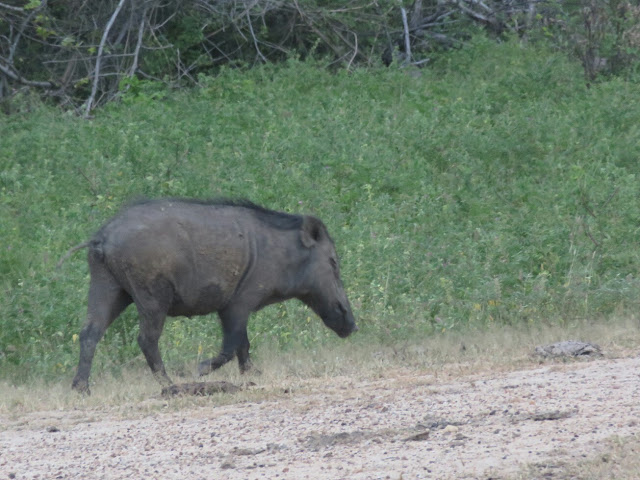This morning we left Nuwara Eliya and travelled through more hill country where the slopes were steeply terraced and intensely farmed with either tea or vegetables. There are so many vegetable stalls along the road that we wonder how they sell their produce.
We stopped at Ella for a pitstop and ice cream, passed through Ella Gap, stopped at Rawana Falls and arrived at Tissa in time for a late lunch.
This afternoon we did another safari ride, this time through Yala National Park and in a more comfortable jeep. Seats and seatbelts and a more sedate driver made for a less hectic ride, if not as exciting as the last!
The vegetation in the Park is more arid and sandy and the range of animals is excellent. Our first sightings were water buffalo and elephants.
There is a wide variety of birds but the ones we saw most were peacocks and hens, two types of eagles, various herons, bee eaters, storks and pelicans.
This is Elephant Rock, one of several outcrops of rocks in the park area.
Lotus ponds and flowers.
There is also a good variety of animals and we saw water buffalo, wild boar, spotted deer, samba deer, elephants, a mongoose and a large crocodile. There are also bears and leopards.
It was a very entertaining four hours, the only disappointment being that we did not see a leopard. This National Park has the highest number of leopards but they only total less than forty. They are shy and timid animals so I guess we can't be too disappointed.



































































